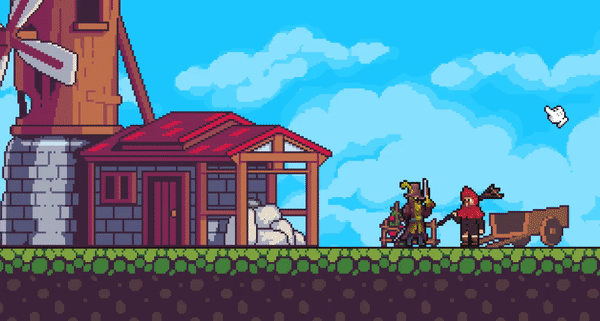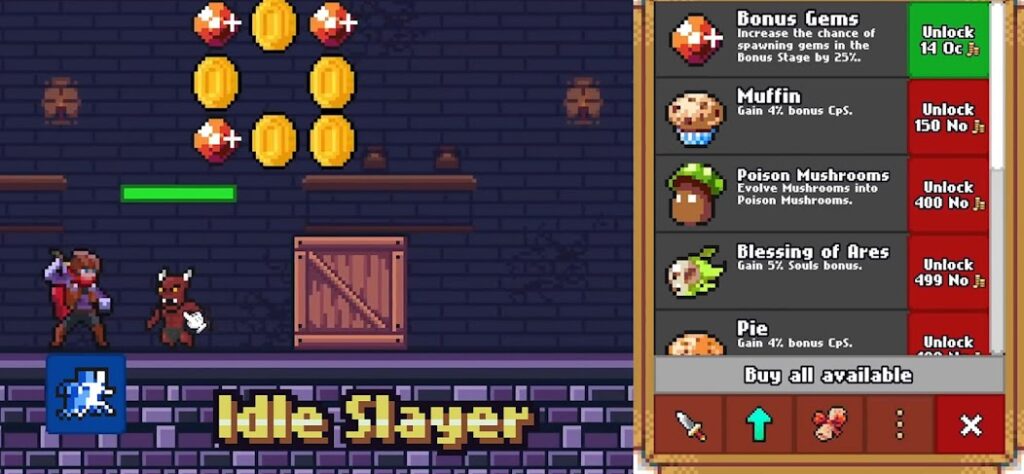In late 2020, Pablo Leban left his job to pursue his passion: developing games. Wearing all the hats, he set out to create the game he wanted to play, powered by an engaged community. Less than a year later, in June 2021, Idle Slayer hit a million downloads on Google Play–a major milestone! It was around this time that he partnered with Yodo1 to help boost revenue and improve key growth metrics. A less ambitious developer might have stopped there, but Pablo was just getting started.
Let’s explore how Idle Slayer made the most of strategic marketing activities to reach the next level of scale on his growth journey.
In July 2022, Yodo1 approached Pablo with a simple yet ambitious proposal: to double Idle Slayer’s downloads in just four months via UA. Why so confident? Working together up to that point had made one thing clear: the game had legs! The team believed in it.

For most games, UA is a daunting prospect. Why? Well, to put it (too) simply, if the Cost Per Install (CPI) is higher than the LTV, it makes little financial sense—it costs more to bring a player into the game via paid marketing than the player will generate over their lifetime playing the game. This is typically because players download a game, play it once, and then never come back (and thus, never buy anything or click on an ad). However, games with excellent retention (42% of D1 in Idle Slayer) and engagement have a big advantage. A well-balanced game economy will make loyal players want to buy in-game items, or click on rewarded ads, thus increasing LTV, and ideally eclipsing CPI.
All that to say, Idle Slayer was in a good place, and working closely with Pablo earlier had allowed the team at Yodo1 to get a clear indication of the game’s UA potential. Pablo agreed to the proposal, working closely with Head of Game Marketing Nadiia Marchynska and her team.
About working with Pablo, Nadiia says, “From the first week of testing everything screamed ‘Let’s scale this game’ – IMPs, CPI, early retention signals, LTV metrics and we hadn’t even switched on any targeting at that point!”
The results were not only positive, they even outpaced projections. Idle Slayer ended up reaching 2.5X growth in the initial four-month period, and at the time of writing, the game’s Daily Active Users (DAU) have quadrupled since UA activities began.
It marked the start of a new chapter focused on expanding the game’s reach to a whole new audience–a global one. The fact is, Pablo built a great game, and he was simply able to leverage Yodo1’s experience and resources to boost the game, allowing it to reach its impressive potential. Not a diamond in the rough…a diamond in need of a megaphone.

What this really shows is that the game was already great on its own, and success was simply a matter of reaching more people. This is such an obvious thing to say, but yet it needs to be said: It always comes down to the game, the community, and the passion of the developer. UA may not be a good fit for a game that struggles with retention. But if a game is truly fun and addictive, and keeps players coming back for more, achieving scale is well within reach.
The UA strategy with Idle Slayer aimed to branch out widely across ad networks. This wasn’t just about casting a wider net; it was about deliberately expanding the game’s presence into new GEOs, particularly finding success in Latin American markets, English-speaking countries like the United States, and even Japan.
Over the months following Idle Slayer’s initial boost, the approach evolved to integrate organic marketing alongside UA. Collaborations with Spanish-speaking YouTubers were already in Pablo’s repertoire of marketing activities. Picking up where these left off, Sandy Smith (Game Marketing Lead) and her team developed a growth strategy spanning all social media channels and partnering with content creators on platforms like Twitch and YouTube.
On the organic strategy, Sandy explains, “If you can gain a deep understanding of your potential players and their interests, you should be able to uncover the unique things that make your game stand out from the crowd. Then amplify them in your social creatives. In the case of Idle Slayer, the key has been an emphasis on the unique retro aesthetic. We also discovered that tagging posts with ‘#retrogaming’ significantly increased views. Who would have guessed?”
Yodo1 essentially became Pablo’s full-stack marketing team, balancing organic and paid marketing efforts to continually push overall performance. Here is where Pablo showed his capacity for big-picture thinking: creating a great game that keeps players deeply engaged is one side of the coin, but continually exploring new markets and testing new marketing strategies is also a critical aspect of long-term success. Remember, this is a one-man team developing a game, but by partnering with Yodo1 to help with everything from game growth strategies, and ad optimization, to marketing, Idle Slayer was able to hit its stride without the need to hire full-time employees. Smart.
Idle Slayer’s growth continues at an unchecked pace, ranking as high as #51 for roleplaying games in the US and Canada, with millions of downloads worldwide, and a truly global community. There’s even a dedicated wiki where players can share experiences, help each other, and give feedback (including crowdsourced translations). Onward and upward!
But what can a game like Idle Slayer do to reach a still wider audience of potential players? For a strategically-minded developer like Pablo, IP licensing seemed like the answer, leading to an exciting crossover with the classic side-scroller Shovel Knight. To learn about it, check out the next part of the story here.